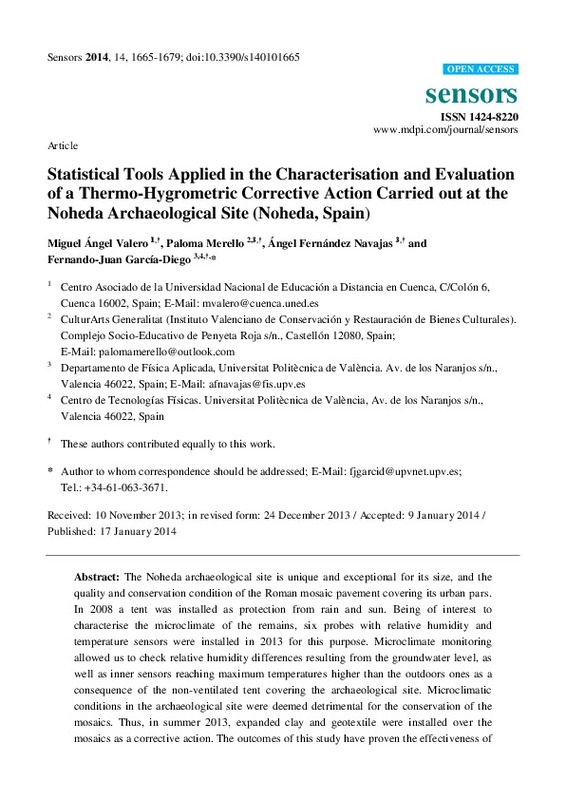JavaScript is disabled for your browser. Some features of this site may not work without it.
Buscar en RiuNet
Listar
Mi cuenta
Estadísticas
Ayuda RiuNet
Admin. UPV
Statistical tools applied in the characterisation and evaluation of a thermo-hygrometric corrective action carried out at the noheda archaeological site (Noheda, Spain)
Mostrar el registro completo del ítem
Valero, MÁ.; Merello Gimenez, P.; Fernández Navajas, A.; García Diego, FJ. (2014). Statistical tools applied in the characterisation and evaluation of a thermo-hygrometric corrective action carried out at the noheda archaeological site (Noheda, Spain). Sensors. 14(1):1665-1679. doi:10.3390/s140101665
Por favor, use este identificador para citar o enlazar este ítem: http://hdl.handle.net/10251/51430
Ficheros en el ítem
Metadatos del ítem
| Título: | Statistical tools applied in the characterisation and evaluation of a thermo-hygrometric corrective action carried out at the noheda archaeological site (Noheda, Spain) | |
| Autor: | Valero, Miguel Ángel Merello Giménez, Paloma Fernández Navajas, Angel | |
| Entidad UPV: |
|
|
| Fecha difusión: |
|
|
| Resumen: |
The Noheda archaeological site is unique and exceptional for its size, and the quality and conservation condition of the Roman mosaic pavement covering its urban pars. In 2008 a tent was installed as protection from rain ...[+]
|
|
| Palabras clave: |
|
|
| Derechos de uso: | Reconocimiento (by) | |
| Fuente: |
|
|
| DOI: |
|
|
| Editorial: |
|
|
| Versión del editor: | http://dx.doi.org/10.3390/s140101665 | |
| Código del Proyecto: |
|
|
| Agradecimientos: |
Our thanks to the Directorate General of Cultural Heritage of the Council of Education, Culture and Sport in the Community Council of Castilla-La Mancha, and to the Provincial Deputation of Cuenca for the institutional and ...[+]
|
|
| Tipo: |
|









